
Rediscovering Japan

Rediscovering Japan
Travel (Gifu Part 2 (Shirakawa-go))

by tomizuta
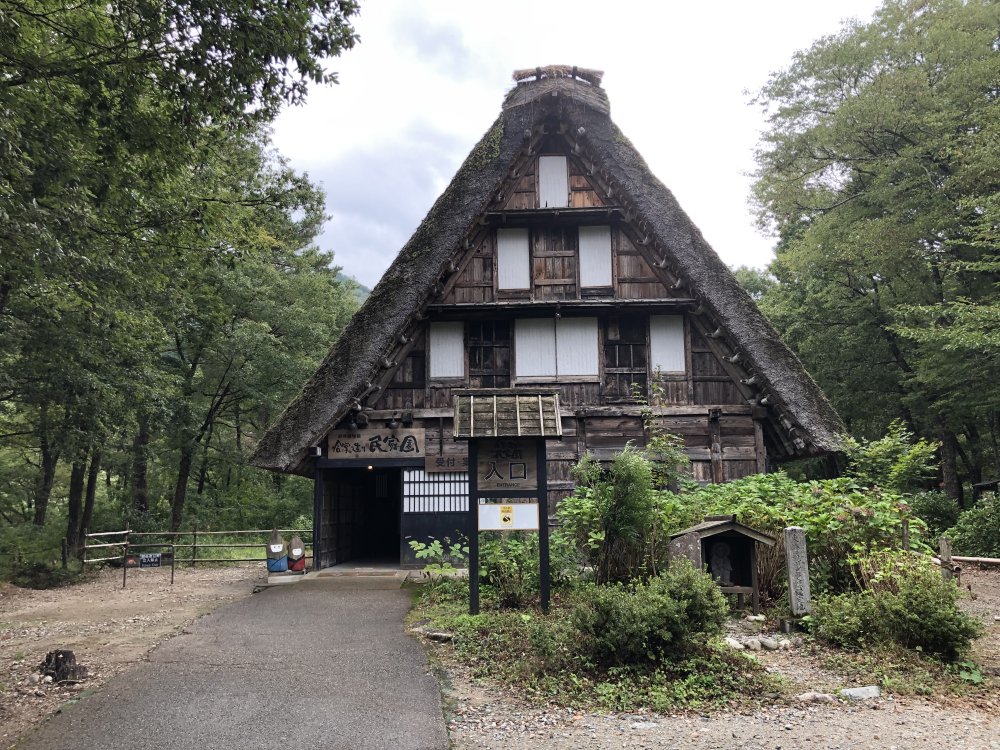
The Gassho-style admission office building of the open-air museum (Gassho-zukuri Minka-en). This building used as an administration office in a neighboring area was also relocated to this place.
<The following morning, I left Takayama, where I had spent the night, for Shirakawago. I had stayed at a ryokan on the western side of Takayama, and had been surprised to be told that I and my wife and another couple were the only Japanese guests staying at the relatively large ryokan. Where many ryokans had struggled to keep their inns open during the pandemic and shifted their business model to refocus on Japanese tourists, it was apparent that this traditional ryokan had adeptly, and successfully reverted to an overseas tourist focus. Although the distance is only about 60 kilometers, the trip by car took about an hour and half, as most of the journey was non-motorway, and there was much roadwork on the way. I parked at the large car park at the entrance to the village.
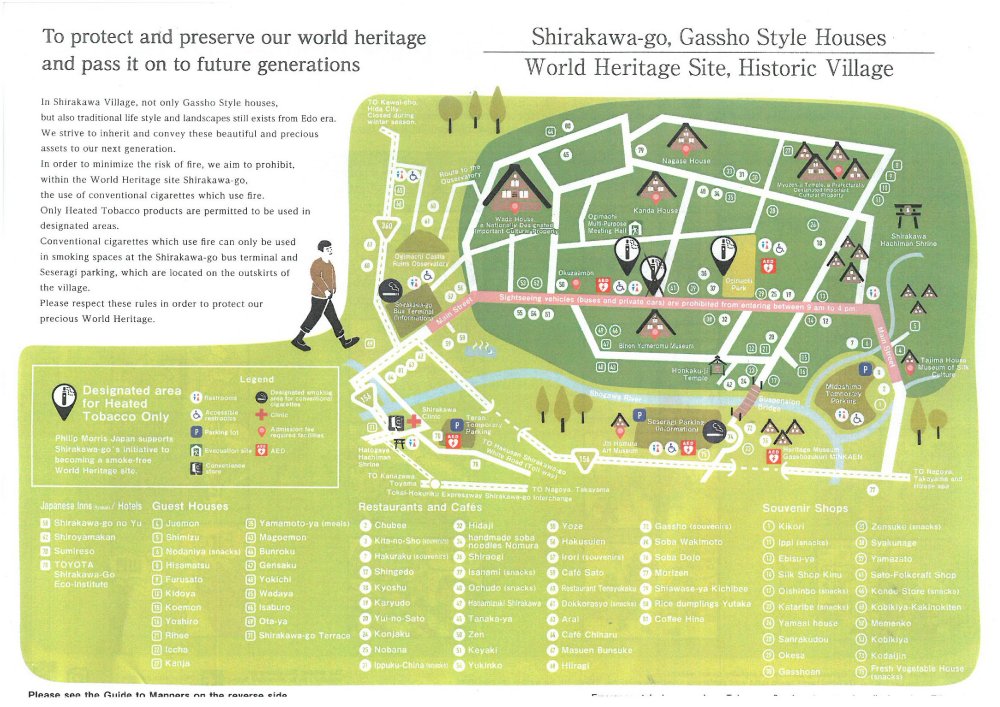
A map of the township of the village of Shirakawa-go obtained from the local government's website. Although the map is small, it'll give you an idea on how I traveled. I started from the free car park with the smoking area sign on the lower right , explored the open-air museum on the right hand side of the car park, crossed the bridge above Shogawa River to enter the villsge. After visiting Myozenji Temple on the top right and some residence houses, went to the Bus Terminal on the right hand side to take a shuttle bus to Ogimachi Castle ruins. You will be able to visit most of the places in a couple of hourds.
Shirakawa-go in Gifu Prefecture. together with Gokayama in Toyama Prefecture were designated as UNESCO World Heritage sites in 1995 as “outstanding examples of traditional human settlements that are perfectly adapted to their environment and their social and economic raison d’être”. It was my first visit, and I was looking forward to seeing how the village had preserved their rural way of living to this day, as well as their Gassho-style houses. Gassho is the Buddhist praying pose with the two palms of the hand pressed against each other, and the building architecture is so named because of how the triangular shape of the steeply slanted roofs resemble a Gassho. Shirakawa-go’s Gassho-style houses in the Hagi district of the village were the first to be designated as Important Preservation District for Groups of Historic Buildings in 1976, a year after the designation system started. Before entering the village, I paid a visit to the open-air museum (Gassho-zukuri Minka-en) adjacent to the car park, where 25 Gassho-style houses have been relocated and are displayed, thinking it best to obtain some prior knowledge. This turned out to be a very good idea. I learned a lot.
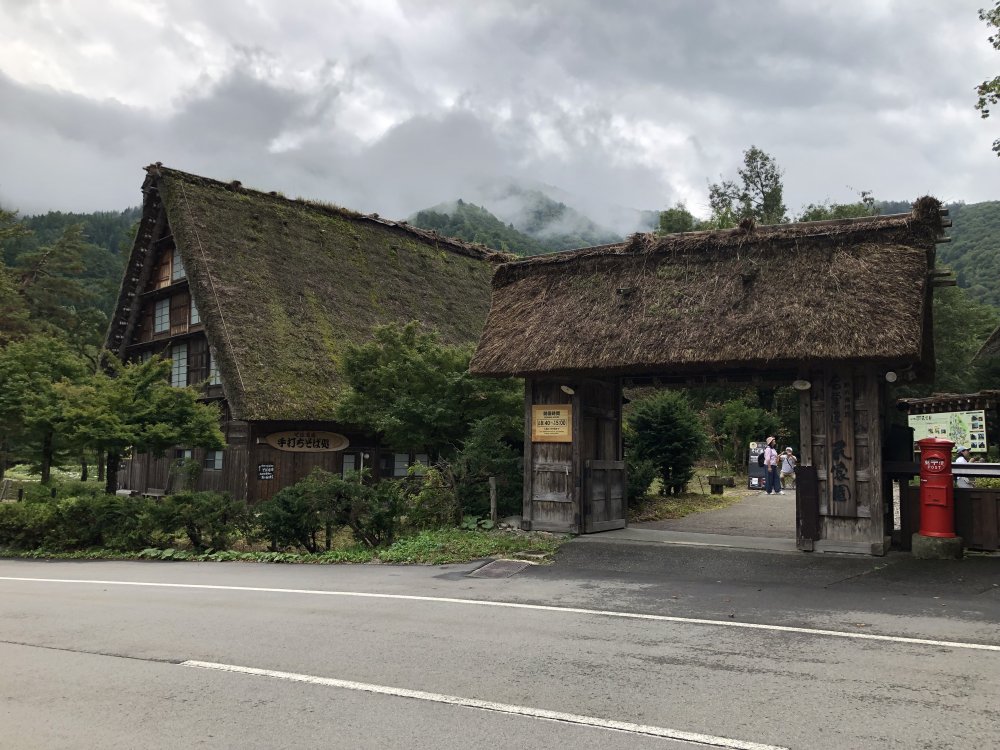
The entrance to the open-air museum (Gassho-zukuri Minka-en).I assure you that it would be worthwhile to include this museum at the start of your tour to gain valuable insight to the village of Shirakawa-go.
Gassho-style houses were built in the Shirakawa-go and Gokayama area from
the middle of the Edo era (17th century) to around 1930. There were about
300 in the early 20th century, but the number had dwindled to 190 by 1960.
One reason was due to some villages being submerged under the Miboro dam
built on upstream Shogawa River for hydroelectric power generation completed
in 1961 (I will provide further explanation toward the end). Another reason
was the depopulation following the rapid post-war development. The villages
with Gassho-style houses had been maintained building on the tradition
of the villagers’ close relationship with each other, but this became no
longer sustainable as many left the village. There was an informative display
of articles and videos introducing the last villagers leaving and abandoning
the Etchuu Katsura village in the 1960s.
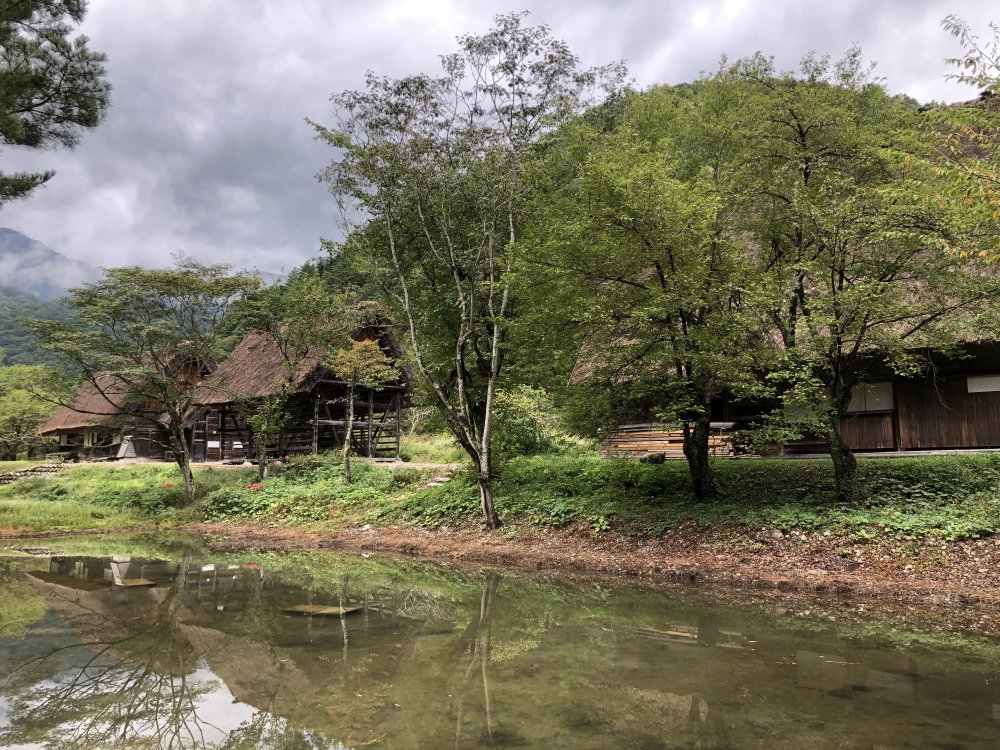
One feature of Shirakawa-go is the nostalgic countryside of Japan. This scene that invites you after you go up from the entrance area is a magnificent reminder of such memories.
I also refreshed my memory that the villagers produced gunpowder in this region, one reason that some people were quite rich. I did not know that one ingredient rich of nitrogen was silkworm droppings, a bi-product of silkworm breeding. Another feature that intrigued me was how closely some of the modest housing displayed resembles a Jomon-style dwelling. This turned out to be not so wild an observation, as I later found an article of the open-air museum that told that people lived here from the neo-lithic Jomon era, and many features of the local tradition such as how to soak nuts in water to reduce the bitterness, lacquerware, woodwork, etc. appeared to have originated from the Jomon people.
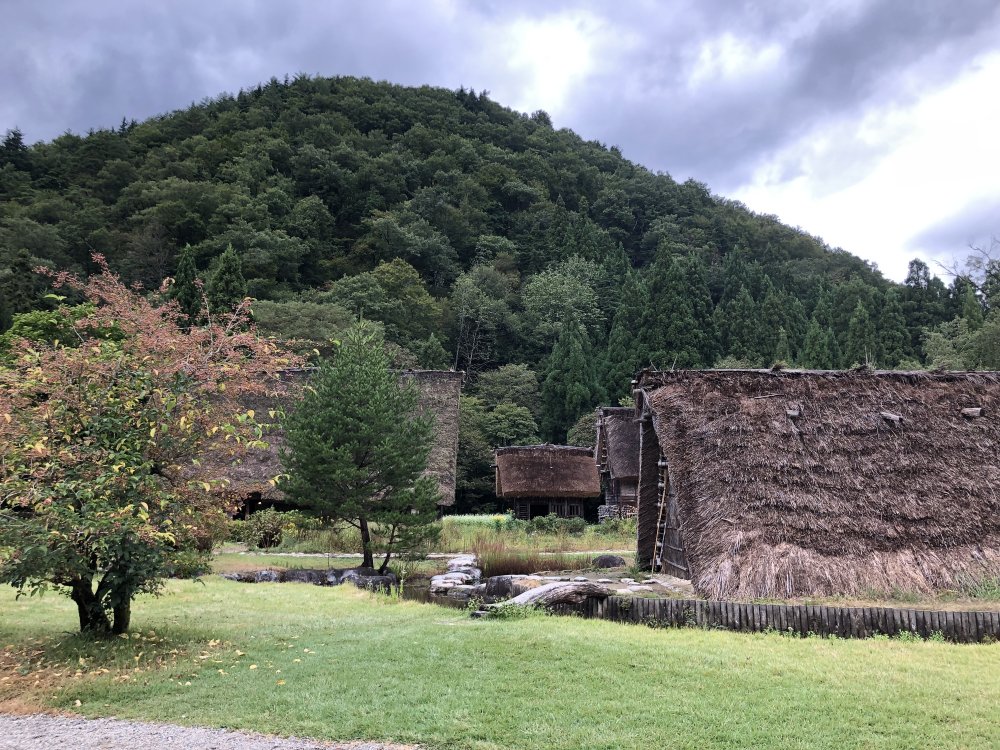
Another feature that intrigued me was how closely some of the modest housing displayed resemble Jomon-style dwellings. This turned out to be not so wild an observation.
I spent about an hour to visit all of the displayed buildings. An English translation is provided for all displays. I left the open-air museum to cross over the bridge above the Shogawa River into the village. It was past noon, so I went to find a restaurant serving local food. I found this wasn’t easy at all, as many restaurants were either closed, or had a long queue of people waiting outside. I gave up the idea and settled for some traditional Japanese sweets, mitarashidango (skewered rice dumplings, broiled and flavored with sugar and soy sauce) and tocimochi (toasted horse chestnut rice cake) which I found amazingly good. I had been tempted by the tochimochi as it was explained that the horse chestnuts had been soaked in water for two weeks, the traditional painstaking method.
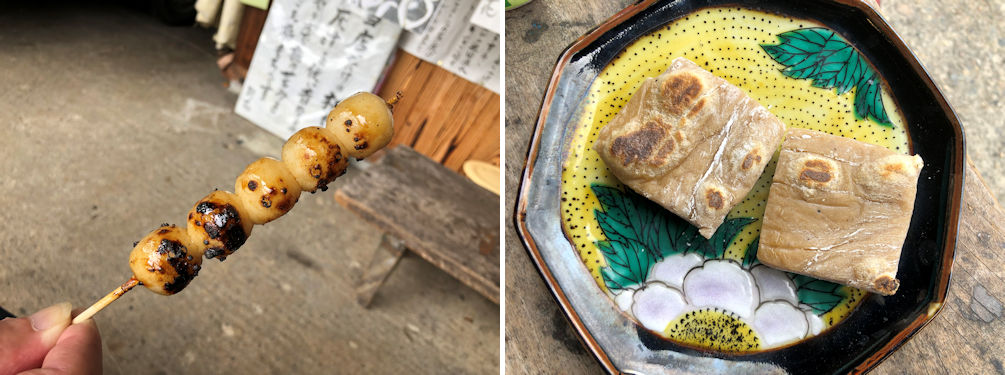
I settled for some traditional Japanese sweets, mitarashidango (skewered rice dumplings, broiled and flavored with sugar and soy sauce) (left) and tocimochi (toasted horse chestnut rice cake) (right) which I found amazingly good.
Shirakawago is not that large, and there are many model routes for visitors. I followed one of the routes starting from Myozenji Temple. This is a temple belonging to the Buddhist Jodo-shinshuu sect, with the only Gassho-style bell-tower and main temple building in Japan. The kuri (building for the monk's housing and kitchen) now serves as a local history museum.
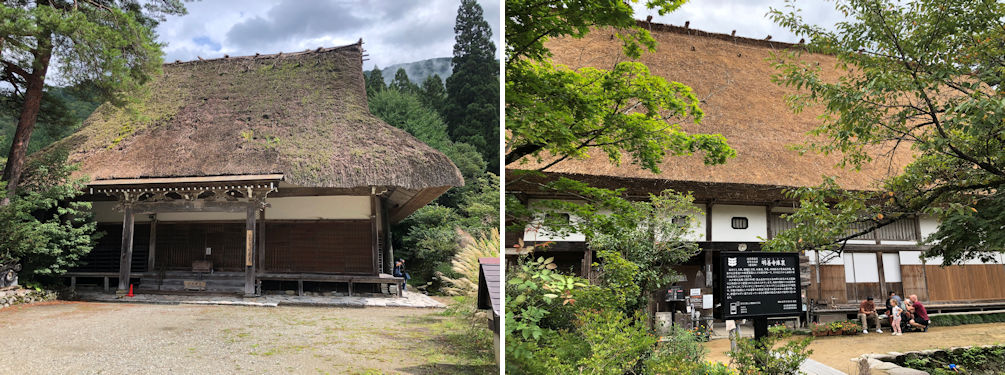
The main temple building of Myozenji Temple (left) and the Kuri building which is now a museum (right). Although the description outside the museum is in Japanes, you can obtain information from the QR code on the board.
There are a couple of Gassho-style buildings that the owners allow visitors. I visited one of such buildings, The Nagase Family residence. This is one of the largest buildings in the village with five storeys built in 1890. The heads of the Nagase Family served as doctors for the powerful Maeda Clan of Kaga (currently Ishikawa and Toyama Prefectures). According to the brochure you receive as you pay the admission fee, "the house was built in 1890 and has a large steep roof. A single piece of rafter beams, called gassho-zai, about 11-meter-long, runs the length of the roof from top to bottom of the slope. Natural cypress trees over 150 years old and trees over 300 years old are used for the pillars of the house." It is well worth the admission fee of 400 yen to explore their magnificent Buddhist altar to remember their ancestors built about 500 years ago, as well as to visit the silkworm breeding areas on the third and fourth floor.
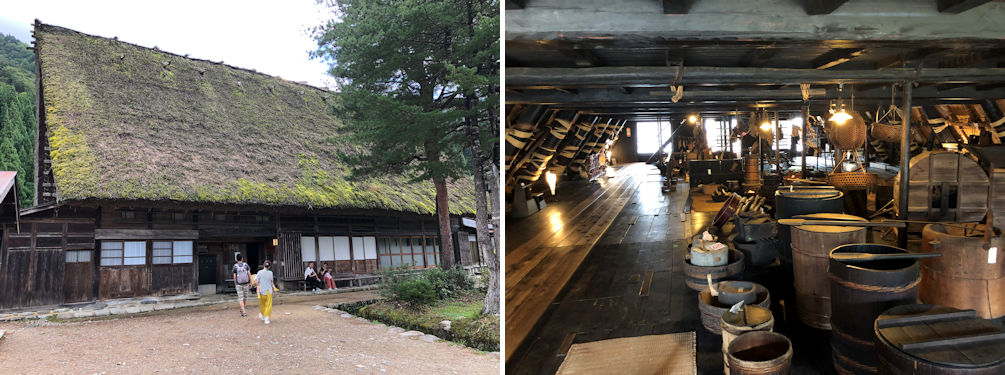
View of the Nagase Familt residence (left). The third floor formerly used for silkworm breeding (right).
I passed by the Kanda Family residence to come to the bus terminal with a shuttle bus service to Ogimachi Castle ruins. The castle was most likely built in the 14th century. From the castle area, you can command a magnificent view of the village. From the castle ruins you can come down to the village in about only ten minutes.
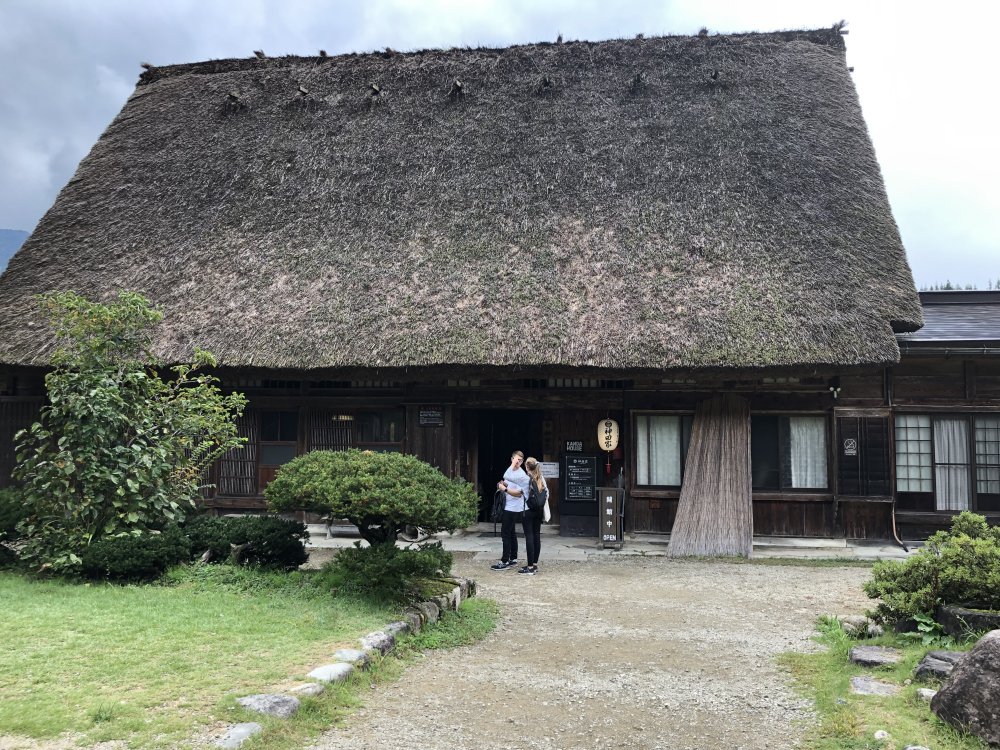
I passed by the Kanda Family residence
There are a handful of areas in Japan that is said to have hosted the survivors of the Heiji into their villages when the Heiji clan lost the war to the Genji clan in the 12th century. Although Shirakawa-go is believed to be one of such villages, it struck me as odd that this did not seem to be mentioned at all. Shirakawa-go to some extent had always been regarded as a mysterious area because of it being a village where the Heiji clan had fled to (click here to find out more about the battle between the first two major samurai clans, the Heiji clan and the Genji clan).
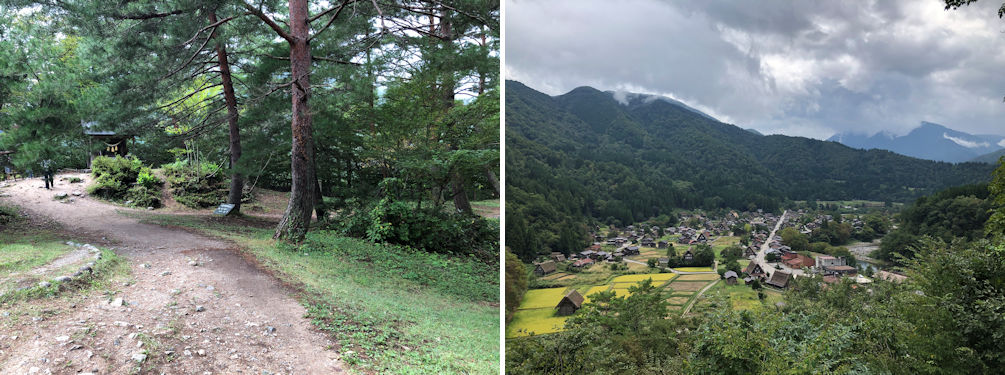
The castle grounds of Ogimachi Castle ruins atop a hill (left). You can command a spectacular view of the village of Shirakawa from the castle ruins (right).
On my way back to Takayama, I paid a visit to Miboro Dam-side Park. This is a facility open to the public and operated by J-Power, the government-owned power development company that built the Miboro Dam and the hydroelectricity power station. The documentary film run at the museum tells the history of the large local protest against the dam construction, as well as the relocation of two cherry blossom trees from the submerged villages to a car park by the national road at a higher altitude where they continue to bloom in spring. Admission is free.
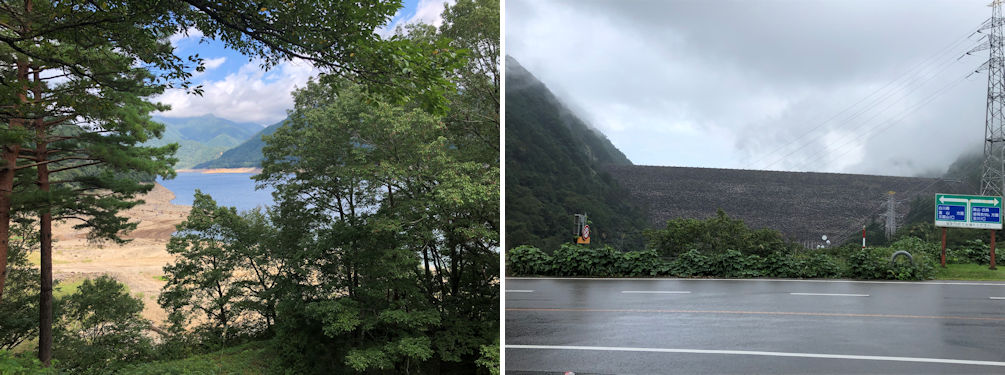
A view of the Miboro Dam (left), and the rock fill stopping the flow of Shogawa River and creating the dam. The museum is behind me in the back (right).